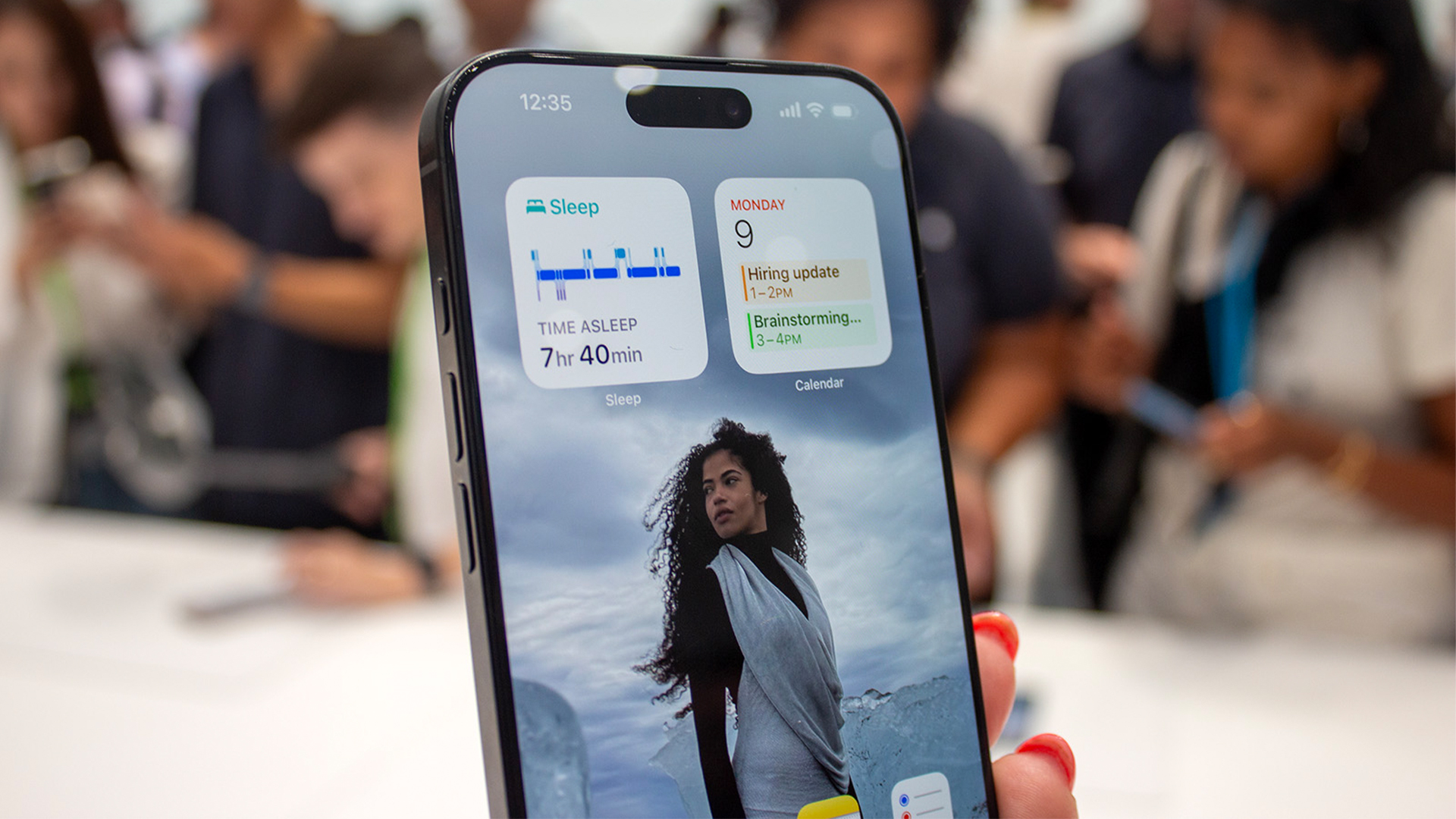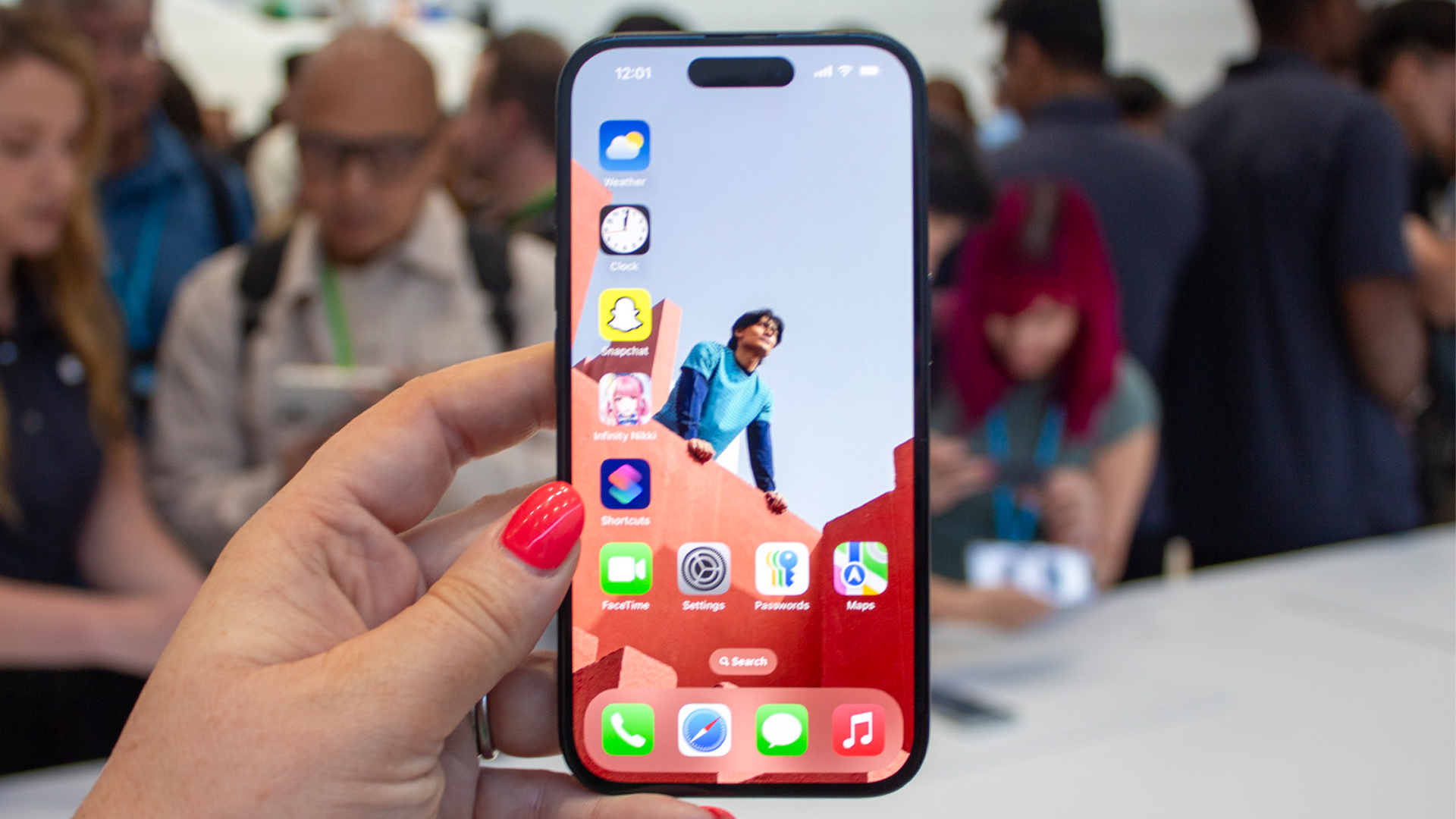
Apple's September event was a busy one this year with not only a refresh of the company's entry-level and mid-range AirPods, but also a 10th anniversary Apple Watch model and, of course, new iPhones. As usual, there are four new iPhone models, with the iPhone 16, iPhone 16 Plus, iPhone 16 Pro and iPhone 16 Pro Max.
Much of the focus for the new iPhones is on the artificial intelligence side of things, with Apple Intelligence arriving within the next couple of months, but there are also some audio and visual upgrades worth making a note of. We saw all four iPhone models at the Apple event and these are our first impressions of the devices, as well as what you might want to pay attention to.
Price

The iPhone 16 starts at £799 / $799 / AU$1399, while the iPhone 16 Plus starts at £899 / $899 / AU$1599. That's for 128GB – not a huge amount of storage for that price, especially if you're a keen photographer or videographer. The storage options do go up to 512GB in the standard models, but the price goes up as you increase that, of course.
The iPhone 16 Pro starts at £999 / $999 / AU$1799, while the iPhone 16 Pro Max starts at £1199 / $1199 / AU$2149. Once again, you get 128GB for that price in the smaller model, though if you opt for the iPhone 16 Pro Max, the storage is 256GB at minimum. Storage tops out at 1GB in the Pro models.
Both the iPhone 16 models and the iPhone 16 Pro models are available to pre-order now and they will go on sale on 20 September. The prices are the same as last year for the UK and US, though for those in Australia, they are slightly cheaper this year compared to last year.
Design

The iPhone has gone through several design changes in the last few years since the iPhone X in 2017, though many of them have been reasonably subtle in comparison to the shift from iPhone 8 to iPhone X. The flatter edges were introduced back in 2020 when Apple revealed the iPhone 12 models and that was the last time the overall shape changed. That's not to say there haven't been design adjustments in that time, however.
The iPhone 14 Pro models swapped the notch in favour of Dynamic Island, which was then introduced on the standard iPhone 15 in 2023. That year was also the year the silent toggle that had been around since the original iPhone in 2007 switched to the Action Button on the Pro models, and titanium was introduced as the material of choice over stainless steel, allowing for lighter devices at the top end.
For this year, it's the Camera Control button on the right edge that is garnering the most amount of attention, though it isn't the only design change worth talking about. We will talk more about the Camera Control button in a second – which, by the way, is on both the standard iPhone 16 models and the iPhone 16 Pro models, but it is the iPhone 16 Pro displays that are arguably the biggest difference in design.

Moving from 6.1-inch and 6.7-inch to 6.3-inch and 6.9-inch, the iPhone 16 Pro and iPhone 16 Pro Max reduce the surrounding bezels of their displays, allowing for 0.2-inch larger screens within a similar footprint to their predecessors. The new models are slightly taller in terms of measurements but we didn't find that noticeable when we picked either of them up. The thinner bezels are noticeable however, and they look lovely, making great use of the space available.
The colour options for the iPhone 16 models and iPhone 16 Pro models are striking too. The Pro models are still the more serious and muted of the two ranges, sticking with a titanium build but offering a slightly different finish to the brushed look of the iPhone 15 Pro.
The standard models, meanwhile, retain an aluminium build for a premium, lightweight finish, but the colours really pop this year. The Pink, Teal and Ultramarine colours are gorgeous, with plenty of punch and vibrancy, though they are joined by Black and White if you want something more subtle. For the iPhone 16 Pro, three of the colours are the same as last year, while a new Desert Titanium replaces the Blue Titanium for a soft and subtle gold option.
Features

As we mentioned, Apple Intelligence is where much of the focus lies when it comes to the features of the iPhone 16 models and all of them will offer the AI features when they become available. Some of the more exciting features include Clean Up, which will remove elements of your images you might not want in your shot and Writing Tools, which can proofread for you, summarise text and help you write if you need a hand to word that email or reply.
You will also be able to type Siri requests, see the live transcription as you're recording in the Voice Notes app, and see time-sensitive emails appear at the top of your inbox. We will save Apple Intelligence for another day though, because there are plenty of other features worth a little mention, too.
Cameras

The Camera Control button is one of those, and it's available across the whole iPhone 16 lineup, not just the Pro models, which is a nice surprise. Press it once and it will open the camera, while another press will take a picture. It can distinguish between a light press and a hard press, and if you double press it, the camera tools appear, including depth of field, Photographic Styles (which have improved this year), and zoom. It takes a couple of minutes to get to grips with the gestures and the force you need to press with, but based on our first impressions, it's lovely in use when you get the hang of it and something we can see coming in particularly handy if you switch between the various lenses or filters.
Speaking of lenses, the cameras have improved for this year's iPhone models. The iPhone 16 Pro models have a new 48-megapixel Fusion main sensor, coupled with the 48-megapixel Ultra Wide camera and 12-megapixel Telephoto lens from the iPhone 15 Pro models. They are also now able to shoot in Dolby Vision up to 4K/120fps, and they also offer 48-megapixel macro photography.
The iPhone 16 models, meanwhile, are now capable of shooting Spatial Video thanks to the vertical lens alignment on the rear, and they also offer macro photography, too. The last thing we will mention on features is that all of the iPhone models apparently have longer battery lives compared to their predecessors, which we will of course test when we come to review these devices properly in the coming weeks.
Picture

When it comes to picture quality, the iPhone 16 Pro and the iPhone 16 Pro Max are the stars of the show. We've mentioned their increase in size compared to last year's models already, and that, by default, means the iPhone 16 Pro Max has the largest iPhone display ever. Both have a Super Retina XDR screen, as previously, and the iPhone 16 and iPhone 16 Plus do, too.
The difference remains, however, that the iPhone 16 Pro and iPhone 16 Pro Max offer ProMotion technology with an adaptive refresh rate between 1Hz and 120Hz, while the iPhone 16 and iPhone 16 Plus models retain the 60Hz offering. That in turn means the iPhone 16 models still don't offer Always-On display technology, which some may be disappointed by.
There has been no change to the maximum brightness of any of the models either, with all models offering 2000 nits peak brightness when outdoors, 1600 nits peak brightness with HDR indoors and a 'typical' brightness of 1000 nits. What is different, however, is the iPhone 16 and iPhone 16 Plus now have a 1 nit minimum brightness, matching the iPhone 16 Pro models, which should make their screens more comfortable to view at night.
All the iPhone 16 models have a pixel density of 260ppi and they all offer a P3 wide colour display, Haptic Touch and True Tone technology, none of which is new compared to the iPhone 15 models. The iPhone 15 Pro models delivered a superb display, so while it was difficult to test the iPhone 16 displays properly during our brief hands-on, we fully expect the iPhone 16 models to deliver in this department again, especially in the case of the iPhone 16 Pro models with their 120Hz refresh rates.
For video playback, the iPhone 16 models are the same as the iPhone 15 models in that they all support HDR with Dolby Vision, HDR10+/HDR10 and HLG, along with Spatial Audio playback and support for Dolby Atmos.
Sound

There haven't been any hardware changes in terms of audio output on the iPhone 16 models compared to the iPhone 15 models, though that's not to say there's nothing to talk about on the audio front.
The iPhone 16 Pro and iPhone 16 Pro Max both feature new microphones, with a new studio-quality four-mic array on board. This wasn't something we could test during our hands-on, but there is also an Audio Mix feature that is present across all four iPhone 16 models, though more advanced in the iPhone 16 Pro models thanks to the new microphones. The Audio Mix feature is on by default when recording video and it will allow you to adjust the audio between a couple of different presets.
Hit the edit button on a video you have shot and you can select between Standard, In Frame, Studio and Cinematic. Based on what we could hear in the demo area, the results are impressive, though this does need some more testing in real-world use and different scenarios. As a general summary however, In Frame is designed to pick up your subject’s voice and eliminate background noise, Studio is designed to make it seem like you have recorded voices in a studio with microphones close to the mouths of your subjects, and Cinematic is designed to replicate what you would see in the movies with voices in front, background noise behind.
The iPhone 16 models also feature wind noise reduction and they are all capable of recording in Spatial Audio and stereo recording, something else we will test when we come to review them.
Early verdict

As you might expect, there are a few upgrades in the latest iPhone 16 models compared to the iPhone 15 models, but while it was the Pro models that stood out in 2023, it's the iPhone 16 models that offer the biggest differences this year. All the iPhone 16 models – standard and Pro – come with the Camera Control button, Audio Mix feature and the ability to capture Spatial Video and Spatial Audio.
The iPhone 16 Pro models do have the edge in terms of displays, not just thanks to their 120Hz refresh rates and Always-On offerings, but also their slimmer borders and larger screens. The Pro models also have better microphones, better camera capabilities and extra features like the ability to record in 4K 120fps.
We will be spending some more time with the iPhone 16 models over the coming weeks to really test their picture and sound qualities, as well as the rest of their features. For now though, there are some great elements that have caught our eye and we're looking forward to testing them all properly.
MORE:
Apple AirPods 4 vs AirPods Pro 2: what are the differences?
Apple AirPods 4 vs AirPods 3: what's new? Should you upgrade?
AirPods Pro 3: release date rumours, price predictions, and 5 features we want







